Footjoy DNA Review
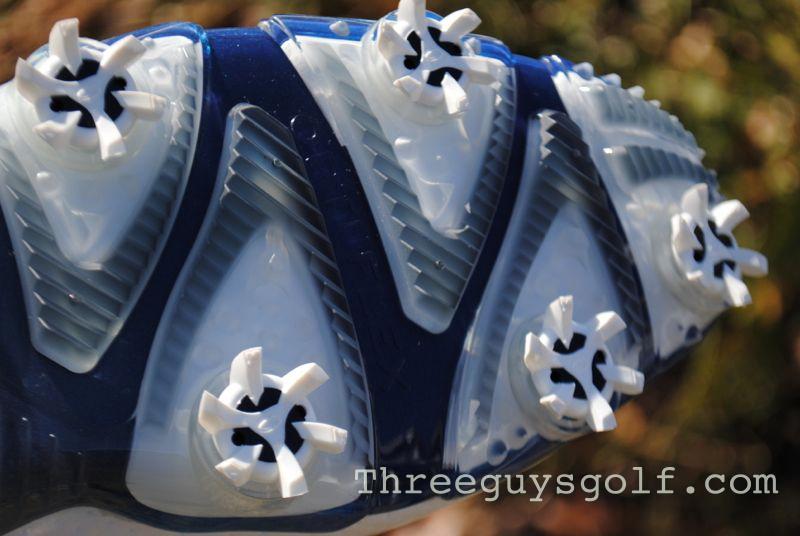
Being the Imelda Marcos of golf shoes, I now can tell a good shoe from a great shoe in about 5 seconds, which is exactly how long it took for me to determine that the FootJoy DNA fell into the latter category.
Last fall I reviewed the FootJoy Icons and I continue to wear them on a fairly regular basis. With that said, the new DNA’s are a clear upgrade in just about every facet (except they are not money blue and yellow like my Icons).
About two months ago, FootJoy began rolling out their new shoe in a series of “secret” packages sent to the media. Each package included one or two pieces of the new shoe. The campaign was meant to be a teaser as well as a way for the company to highlight the specific areas of technological improvement they have built into the shoe. Sure it was kind of corny and maybe not the hippest promotion in the world, but remember this is FootJoy who has just recently shed their “get off my lawn” mentality . . . so I’ll give them a B+ for effort on the promotion.
Regardless, let’s do the walk through all of the items I was sent and dig into all of the scientific research behind it. On second thought, lets NOT do that. If you want all that mumbo jumbo you can read the FootJoy site or some other regurgitated review. Instead I will give you my semi-technical explanation and the reason why you should care (keep in mind, I was Psych major not a Chem major).
Ankle collar: This is the part that goes around your heel. It is squishy and soft and even though I am sure there is a more scientific term it boils down to the fact that you will not have any ankle issues – ever. Not on your first round or your hundredth round.
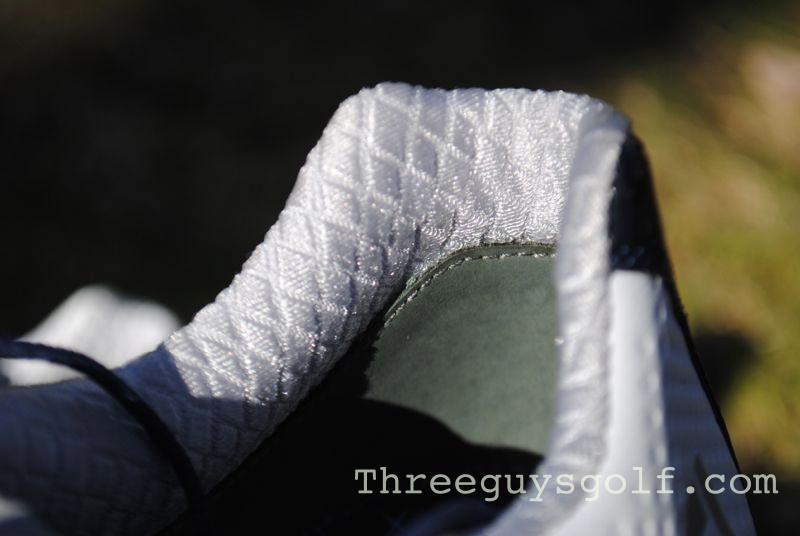
Tongue: Again, squishy at the pinch points (or at least more squishy than most). Whatever, what I really care about is whether it will stay in place. I absolutely hate it when the tongue gets pushed to one side and the laces end up on my foot. Not the case with the FootJoy DNA. Oh, and the laces are top notch . . . top notch.
Sole: The real change is the positioning of the spikes. For the DNA, FootJoy moved the spikes really close to the edge of the shoe. So close you can almost see a spike peeking out if you look from directly above. My expectation is that this provides superior traction, balance, and grip, but honestly FootJoy has been kinda nailing those things for years. Still, it is impressive that they continue to improve on what they do so well.
Insert: In my mind, this is where FootJoy really hit it out of the park. I own a pair of FootJoy Icons and I dig them but they are pretty heavy and walking 18 can be a little taxing compared to a much lighter shoe. The DNA insert has massive padding on the heel which provides for increased cushion and support. I can walk 18 in these shoes with no problem and there is noticeable support around the heel.
Fittingly, my first round (actually the first time I wore the FootJoy DNA shoes) was when I had the opportunity to play TPC Sawgrass as part of the BBBatTPC media event. Now normally it is a fairly dumb idea to wear brand new shoes for a big round of golf, but I had supreme confidence in FootJoy (or at least I was keeping my fingers crossed). Admittedly, I prefer a non-cleated golf shoe, but I still enjoy the feel of a more substantial shoe on occasion. Fortunately, the FootJoy DNA are not bulky or particularly heavy so you don’t feel burdened by clod stoppers.
As I mentioned earlier, I own one other pair of FootJoys. They were custom designed by me which means they are not white. In fact they are blue with yellow accents. It’s not so much that I wanted blue shoes, but I want shoes that don’t look dirty and white can be boring. Well, for a white shoe, FootJoy did a pretty good job. First they added texture in the form of small circled indentions on most of the shoe. Besides giving the shoes some depth, they also help to give the shoe breathability which some of the older FootJoy models lacked. They also gave the shoe a touch of blue on the heal and near the sole that also helps to balance the look and reduce the solid whiteness of it all.
Still there is the issue of dirt. Now, maybe you belong to a swanky country club where there is only perfectly manicured fairways, but I unfortunately do not. Here in NC, we play golf 12 months a year but for about four of those months it can be wet and cold, and since bermuda grass does not absorb water when it is dormant, we get mud. As much as I hated to wear my white FootJoy DNA shoes in these dreadful conditions, I wanted to see how they would do. Obviously they are waterproof. I think FootJoy has been doing waterproof since day one but keeping them clean was a whole other ball of wax, especially considering the texture.
On this particular day the fairways were reasonably dry, albeit squishy in some sections. Throwing caution to the wind, I stepped into the bank of a small stream (I had to search for one since my ball is always next to the pin). Mud rolled up and around the shoe as I cringed, wondering if they would once and forever never be white again. For good measure, I played the final 4 holes with one muddy shoe, threw them in my car and headed home to scrub a dub dub.
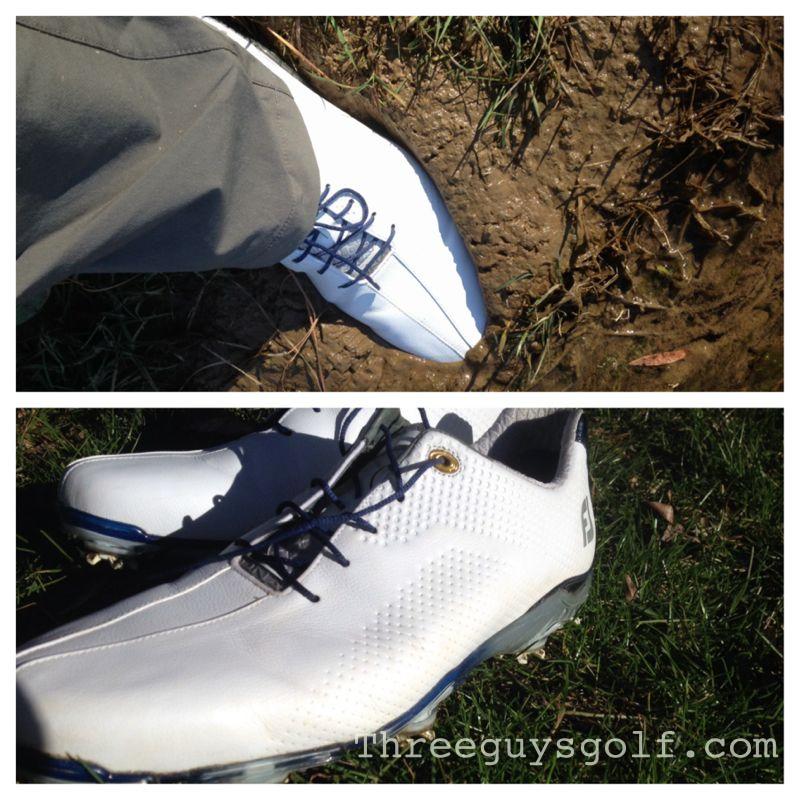
Since there was so much mud, I took the hose to them to get off the big chunks, then simply toweled the rest off. The process was far easier and effective than I was expecting. In no time the FootJoys were perfectly white again. It was almost as if there as a bit of protective coating that allowed the mud to never really penetrate the shoe. Either way, I am thrilled as I am no longer fearful of wearing them in less than ideal conditions.
A final note on sizing. The DNA’s run the same as other FootJoys but I do feel like there is a wider toe area. Additionally, the leather is softer and more flexible than other FootJoys which I think makes walking much easier.
Last year, FootJoy tried to break the mold with the M Project and showed they could compete in the spikeless, barefoot market. In 2014, FootJoy is seeking to reaffirm that they absolutely own the premium spike golf shoe. For this guy, I think they have made a pretty solid case.
You can see the whole line on the FootJoy website.


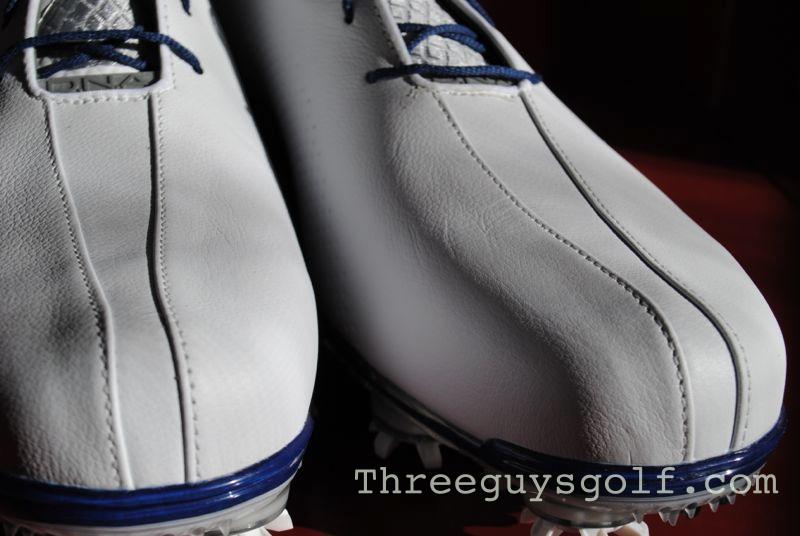
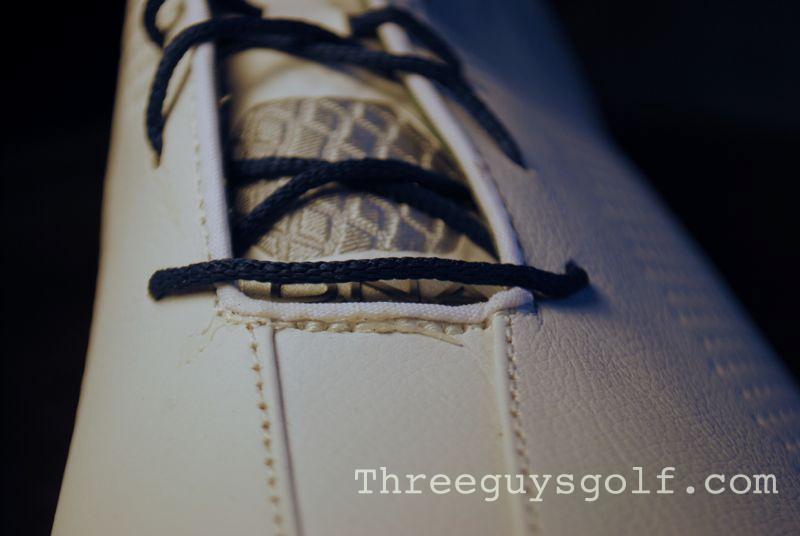

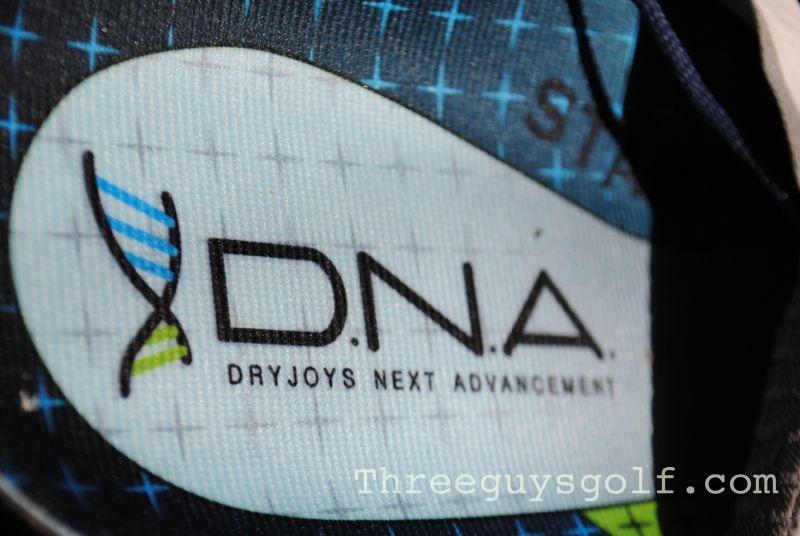
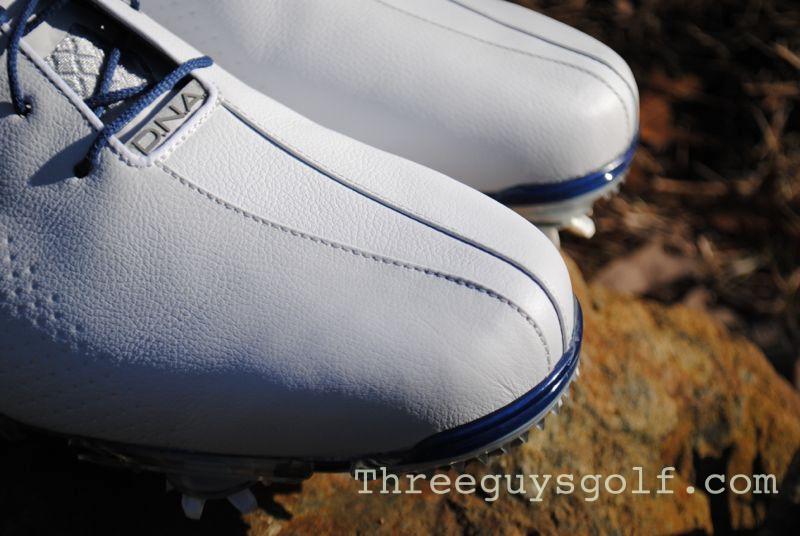
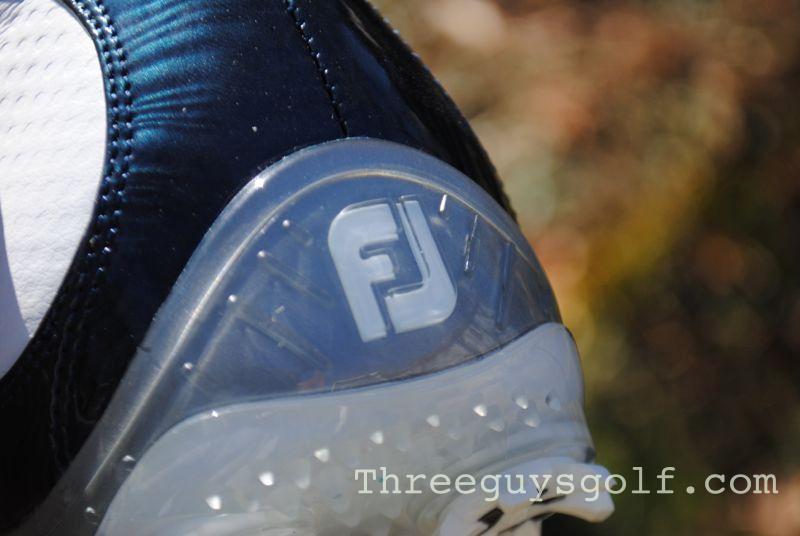
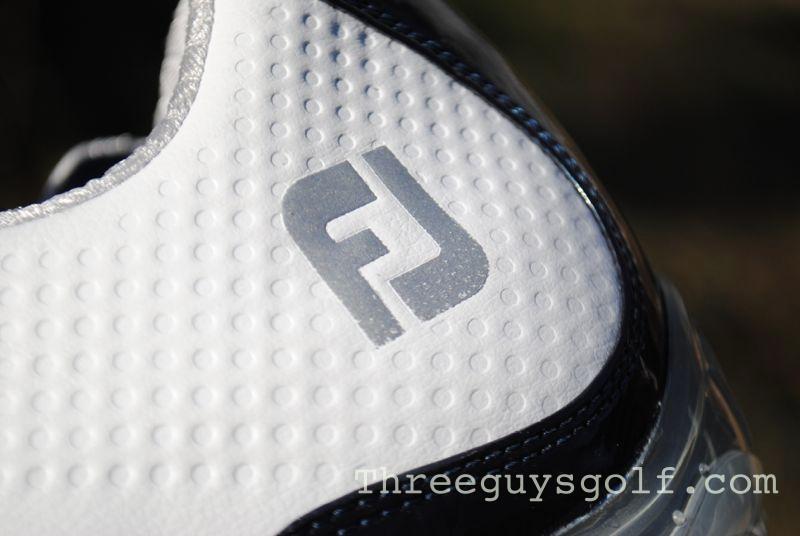
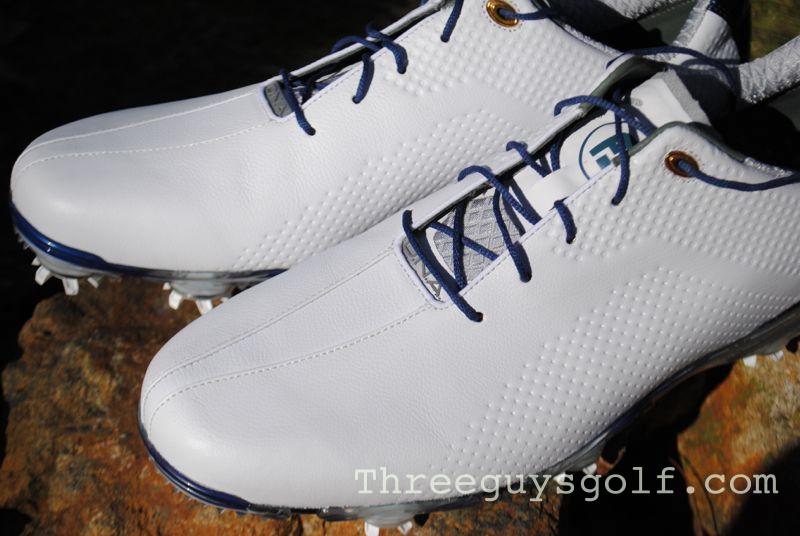
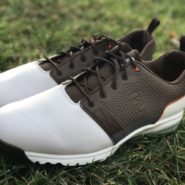
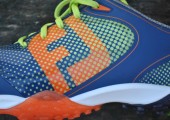
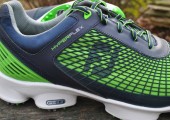
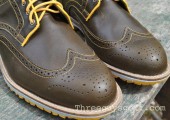

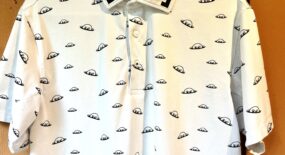
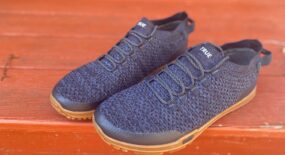

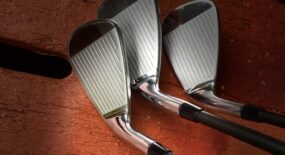
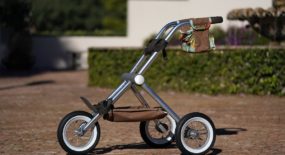
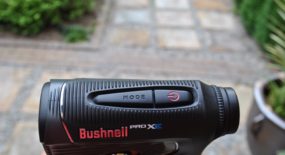
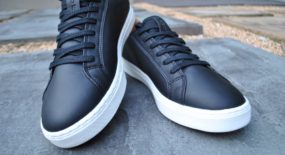

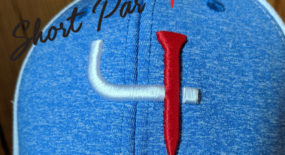
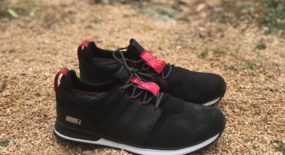

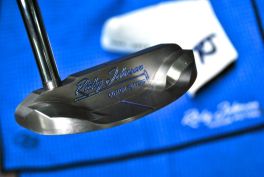
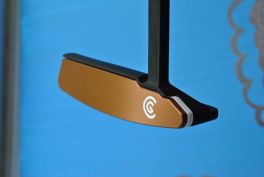
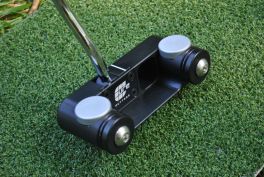
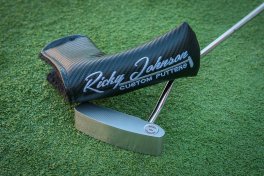
Your statement about the wider toe and softer leather is very accurate:
“The DNA’s run the same as other FootJoys but I do feel like there is a wider toe area. Additionally, the leather is softer and more flexible than other FootJoys which I think makes walking much easier.”
Watching your golf commercials.
What dpes DNA mean.
Thank you.
DNA stands for DryJoy Next Advancement
you do not mention that the spikes do not stay in….great and comfortable shoe, my husband raves!!!! However every time he wears them he need sot replace spikes during his round of golf. He may not buy them due to his frustration
Liz, I have not had that problem with the DNA shoes but I have had it occur with other shoes that use the quick spike system. My advice is to make sure they are really locked in. Sometimes with new shoes they are not tightened in all the way.
I had the spike problem right from the start along with a tongue/grove problem.
The shoes came laced. The tongue groves though are in the wrong spot. Where the laces cross is above the groves. As a result the tongue groves started to tear the first time I laced the shoes on and ripped right out the 3rd time. This seems to be a design defect in that the slots should be cut where the laces cross.
I also lost 2 spikes the first time I wore them. I haven’t lost a spike from any of my other shoes in years.
I work in the men’s locker room at a private country club and I rate the DNA as one of the most over rated shoe ever marketed. The spikes constantly fall out, the loop on the tongue breaks very easily as a result the tongue slips to one side or the other, they collect too much grass and creates a slipping hazard and a constant need for cleaning while you play, and the leather stains and wears out very quickly. I estimate you will have to buy a pair every year if not every 9 months.
I agree with all of the positive comments made about the new DNAs. However, I am surprised that no one else has noted an issue with the split toe design. While I maybe the only one out there that has been “snake bit”, I have already had to return 2 pairs of DNAs — and am in the process of returning a 3rd pair. The 2 problems that I have experienced is that either (1) the width between the 2 seams running down the middle of the shoe are noticeably different from the right to the left shoe — or (2)the curvature of the seams are noticeably different between the right and left shoe. In both cases, to me it make the shoe appear defective. I would also mention that these type of inconsistencies normally do not bother me however, it is one of those things that once you notice it, it is hard to ignore it. Has anyone made, or seen a complaint of this nature?
I have had no problems with the spikes, and possibly the only white shoe that stays white,like the OP i just hose off the mud and spray some leather cleaner on and pesto like new. Not as comfortable as my ECCOs but first FJ shoe that doesnt hurt after 18 holes
The DNAs are the most comfortable golf shoe I’ve owned. After 15 months (at least two rounds a week in Irish weather) the leather has cracked – despite loving care of cleaning and waxing with dining after every round! I did have problems with some of the replaced spikes after the original wore out but latest batch have held in place. Nonetheless I’ve just ordered another pair – does anybody have any better tips for maintenance? Ps – thought the laces were amazing still seem to be as strong as they were when new!
That’s “Dubin” not “dining”
In my golfing life i mainly used Footjoy and i must say that they are the most confortable to wear, i bought a pair of DNA and the problem is the spikes, i lost one and managed to replace it (somehaw) yestarday i lost another and cannot replace it, i approched the shop and the the answer is: sorry cant help.
They are no cheap and having to trow them away is painful, DNA never again.